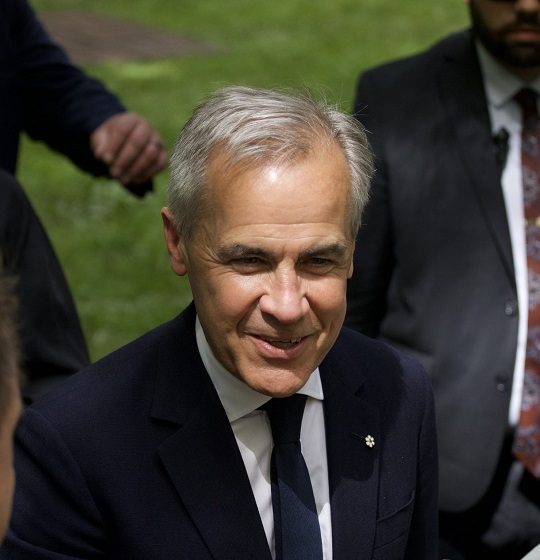Energy
Trump Has A Plan To Fix The Electricity Grid — Increase Supply

 From the Daily Caller News Foundation
From the Daily Caller News Foundation
By Bonner Cohen
Trump vowed in a second term to issue a “national emergency declaration to achieve a massive increase in domestic energy supply.”
Citing the need for more electricity to continue growing the artificial intelligence (AI) sector and keep the U.S. tech industry ahead of China, former President Donald Trump on Sept. 5 vowed in a second term to issue a “national emergency declaration to achieve a massive increase in domestic energy supply.”
But standing in the way of ramped up domestic energy production is a federal permitting process notorious for its foot-dragging. Some in Congress acknowledge the problem, but their latest effort to rectify the situation risks being overtaken by surging energy demand and troubling geopolitical realities.
Hoping to unravel the reams of red tape that have tied up transportation, energy, and mining projects for years, and in some cases killed them altogether, Sen. Joe Manchin (I-W.Va.) and Sen. John Barasso (R-Wyo.) want their colleagues to approve their “Energy Permitting Reform Act of 2024.” Centralizing decision-making on power transmission nationwide is the centerpiece of their legislation. Accordingly, it would bolster the Federal Energy Regulatory Commission’s (FERC) authority to approve interstate transmission lines and require interregional transmission planning.
In a bid to satisfy as many conflicting interests as possible, the bill establishes deadlines for filing lawsuits over energy and mining projects, and sets requirements for onshore and offshore oil, gas, coal and renewable energy leasing and permitting. It also includes provisions on hard-rock mining and sets a 90-day deadline for the secretary of Energy to grant or deny liquified natural gas (LNG) export applications, according to a summary of the legislation.
The bill is generally supported by such groups as the American Clean Power Association, the Solar Energy Industries Association, the American Council on Renewable Energy, Advanced Energy United, and Americans for a Clean Energy Grid, UtilityDive reported.
Many of the wind, solar and transmission-line projects favored by these groups have encountered the same permitting and litigation delays that have bedeviled fossil-fuel producers. On the other hand, the Sierra Club opposes the measure, finding it insufficiently hostile to fossil fuels and saying it “would open up federal lands and waters to more leasing and drilling and unnecessarily rush reviews of natural gas export projects…”
Aside from all the problems inherent in vesting so much authority in one federal bureaucracy, FERC, to handle the nation’s power transmission challenges, such conventional approaches are no match for the transformative developments already roiling America’s electricity supply. While politicians, along with some less-than-savvy investors, have been content to pour wads of public and private cash into the green energy transition, artificial intelligence (AI) is rapidly upending the world elites thought they knew.
Energy-hungry data centers — there are currently over 2,700 in the United States with hundreds more planned — need electricity 24/7/365 if they are to meet the extraordinary demands of AI. The amount of electricity AI-driven data centers require cannot be produced by intermittent solar and wind power transmitted hundreds if not thousands of miles from the sunny Southwest or the gusty plains of the Upper Midwest. Big Tech’s demands on an already shaky grid far outstrip anything politically fashionable solar panels and wind turbines can ever deliver. To their chagrin, the Big Four data center developers — Amazon Web Services, Google, Microsoft and Beta — now find themselves increasingly dependent on the very fossil fuels and — where available — nuclear power they have been so quick to dismiss over the years.
But given the choice of meeting their lofty Net-Zero carbon emissions goals or cashing in on AI’s financial promise, Big Tech will choose the second option. And the stakes go well beyond the companies’ respective bottom lines. Data centers are essential to AI, and AI is essential to national security. If the U.S. is not the global leader in AI, China (along with its junior partner, Russia) will be.
“AI can be the foundation of a new industrial base it would be wise for our country to embrace,” Sam Altman, co-founder and CEO of OpenAI, recently wrote in the Washington Post.
Ceding the United States’ current lead in AI to China would be a blow from which America’s industrial base, and thus its military preparedness, would be hard pressed to recover. Data centers, powered by a steady flow of reliable energy, are now key assets in the perilous world of 21st century geopolitics.
As neighbors in the communities in which they are located, data centers are a mixed blessing. They generate enormous revenues to local governments but can be seen by nearby residents as disruptive to their community. The non-descript but noisy buildings comprising data centers house thousands of computer servers processing the data that make the internet, cloud computing and AI possible. They not only require gobs of power but also plenty of water used to lower temperatures.
Together with government-driven efforts to put more EVs on the road, data centers further complicate the challenges facing the already stressed electric grid. These developments are beyond the reach of the horse-trading that goes into Capitol Hill legislation. What is clear, however, is that the vaunted green-energy transformation will never be equal to the task before us.
Bonner Russell Cohen, Ph. D., is a senior policy analyst with the Committee for a Constructive Tomorrow (CFACT).
Automotive
Federal government should swiftly axe foolish EV mandate

From the Fraser Institute
Two recent events exemplify the fundamental irrationality that is Canada’s electric vehicle (EV) policy.
First, the Carney government re-committed to Justin Trudeau’s EV transition mandate that by 2035 all (that’s 100 per cent) of new car sales in Canada consist of “zero emission vehicles” including battery EVs, plug-in hybrid EVs and fuel-cell powered vehicles (which are virtually non-existent in today’s market). This policy has been a foolish idea since inception. The mass of car-buyers in Canada showed little desire to buy them in 2022, when the government announced the plan, and they still don’t want them.
Second, President Trump’s “Big Beautiful” budget bill has slashed taxpayer subsidies for buying new and used EVs, ended federal support for EV charging stations, and limited the ability of states to use fuel standards to force EVs onto the sales lot. Of course, Canada should not craft policy to simply match U.S. policy, but in light of policy changes south of the border Canadian policymakers would be wise to give their own EV policies a rethink.
And in this case, a rethink—that is, scrapping Ottawa’s mandate—would only benefit most Canadians. Indeed, most Canadians disapprove of the mandate; most do not want to buy EVs; most can’t afford to buy EVs (which are more expensive than traditional internal combustion vehicles and more expensive to insure and repair); and if they do manage to swing the cost of an EV, most will likely find it difficult to find public charging stations.
Also, consider this. Globally, the mining sector likely lacks the ability to keep up with the supply of metals needed to produce EVs and satisfy government mandates like we have in Canada, potentially further driving up production costs and ultimately sticker prices.
Finally, if you’re worried about losing the climate and environmental benefits of an EV transition, you should, well, not worry that much. The benefits of vehicle electrification for climate/environmental risk reduction have been oversold. In some circumstances EVs can help reduce GHG emissions—in others, they can make them worse. It depends on the fuel used to generate electricity used to charge them. And EVs have environmental negatives of their own—their fancy tires cause a lot of fine particulate pollution, one of the more harmful types of air pollution that can affect our health. And when they burst into flames (which they do with disturbing regularity) they spew toxic metals and plastics into the air with abandon.
So, to sum up in point form. Prime Minister Carney’s government has re-upped its commitment to the Trudeau-era 2035 EV mandate even while Canadians have shown for years that most don’t want to buy them. EVs don’t provide meaningful environmental benefits. They represent the worst of public policy (picking winning or losing technologies in mass markets). They are unjust (tax-robbing people who can’t afford them to subsidize those who can). And taxpayer-funded “investments” in EVs and EV-battery technology will likely be wasted in light of the diminishing U.S. market for Canadian EV tech.
If ever there was a policy so justifiably axed on its failed merits, it’s Ottawa’s EV mandate. Hopefully, the pragmatists we’ve heard much about since Carney’s election victory will acknowledge EV reality.
Daily Caller
Trump Issues Order To End Green Energy Gravy Train, Cites National Security


From the Daily Caller News Foundation
By Audrey Streb
President Donald Trump issued an executive order calling for the end of green energy subsidies by strengthening provisions in the One Big Beautiful Bill Act on Monday night, citing national security concerns and unnecessary costs to taxpayers.
The order argues that a heavy reliance on green energy subsidies compromise the reliability of the power grid and undermines energy independence. Trump called for the U.S. to “rapidly eliminate” federal green energy subsidies and to “build upon and strengthen” the repeal of wind and solar tax credits remaining in the reconciliation law in the order, directing the Treasury Department to enforce the phase-out of tax credits.
“For too long, the Federal Government has forced American taxpayers to subsidize expensive and unreliable energy sources like wind and solar,” the order states. “Reliance on so-called ‘green’ subsidies threatens national security by making the United States dependent on supply chains controlled by foreign adversaries.”
Dear Readers:
As a nonprofit, we are dependent on the generosity of our readers.
Please consider making a small donation of any amount here.
Thank you!
Former President Joe Biden established massive green energy subsidies under his signature 2022 Inflation Reduction Act (IRA), which did not receive a single Republican vote.
The reconciliation package did not immediately terminate Biden-era federal subsidies for green energy technology, phasing them out over time instead, though some policy experts argued that drawn-out timelines could lead to an indefinite continuation of subsidies. Trump’s executive order alludes to potential loopholes in the bill, calling for a review by Secretary of the Treasury Scott Bessent to ensure that green energy projects that have a “beginning of construction” tax credit deadline are not “circumvented.”
Additionally, the executive order directs the U.S. to end taxpayer support for green energy supply chains that are controlled by foreign adversaries, alluding to China’s supply chain dominance for solar and wind. Trump also specifically highlighted costs to taxpayers, market distortions and environmental impacts of subsidized green energy development in explaining the policy.
Ahead of the reconciliation bill becoming law, Trump told Republicans that “we’ve got all the cards, and we are going to use them.” Several House Republicans noted that the president said he would use executive authority to enhance the bill and strictly enforce phase-outs, which helped persuade some conservatives to back the bill.
-

 MAiD1 day ago
MAiD1 day agoCanada’s euthanasia regime is already killing the disabled. It’s about to get worse
-

 Daily Caller12 hours ago
Daily Caller12 hours agoUSAID Quietly Sent Thousands Of Viruses To Chinese Military-Linked Biolab
-

 Censorship Industrial Complex19 hours ago
Censorship Industrial Complex19 hours agoCanadian pro-freedom group sounds alarm over Liberal plans to revive internet censorship bill
-

 Alberta9 hours ago
Alberta9 hours ago‘Far too serious for such uninformed, careless journalism’: Complaint filed against Globe and Mail article challenging Alberta’s gender surgery law
-

 Fraser Institute1 day ago
Fraser Institute1 day agoBefore Trudeau average annual immigration was 617,800. Under Trudeau number skyrocketted to 1.4 million from 2016 to 2024
-

 Daily Caller2 days ago
Daily Caller2 days ago‘I Know How These People Operate’: Fmr CIA Officer Calls BS On FBI’s New Epstein Intel
-

 International2 days ago
International2 days agoChicago suburb purchases childhood home of Pope Leo XIV
-

 Economy1 day ago
Economy1 day agoThe stars are aligning for a new pipeline to the West Coast


